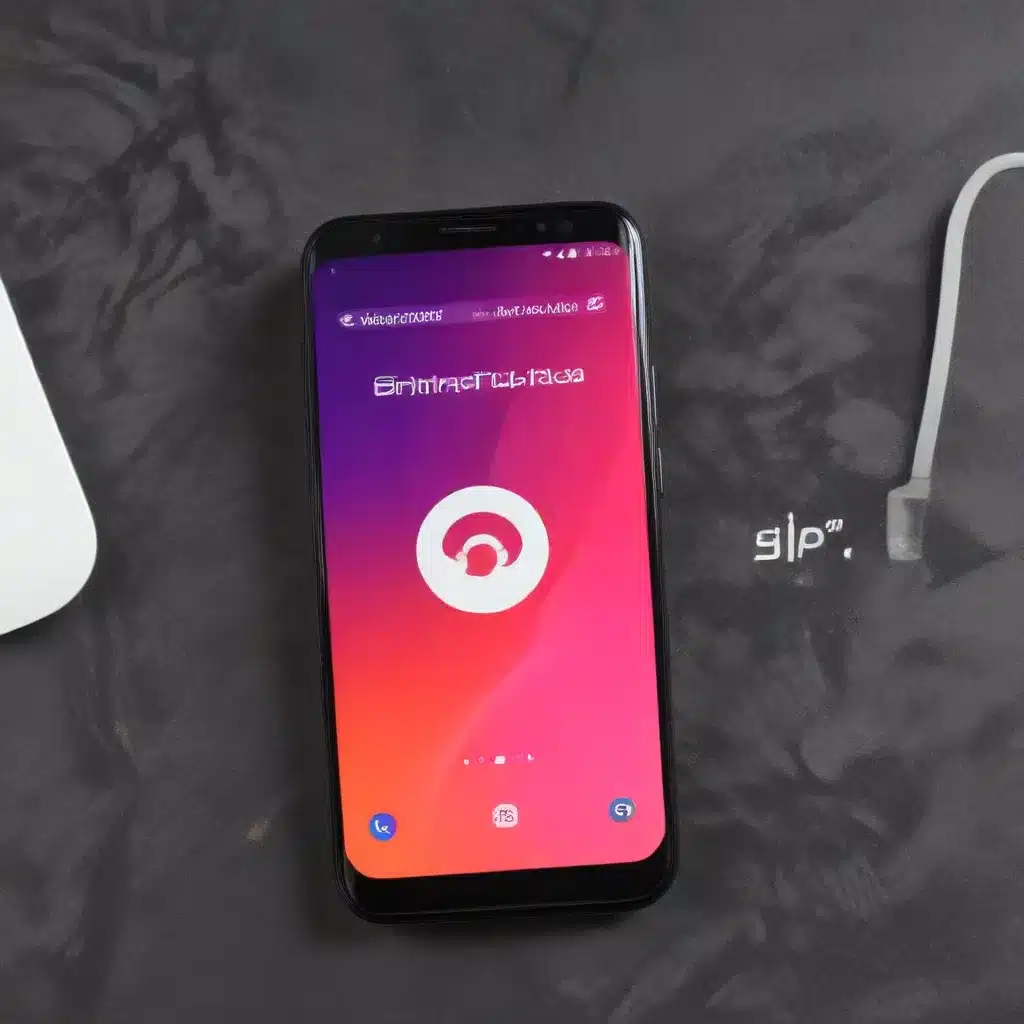
Streamlining Your Mobile Workflow with Seamless Wireless Transfers
In today’s fast-paced digital landscape, efficiently managing the flow of data between our mobile devices and computers has become a critical component of our productivity. Whether you’re a seasoned IT professional or a tech-savvy individual, the ability to wirelessly sync your Android device with your desktop or laptop can significantly simplify your workflow.
Overcoming Connectivity Challenges
While the promise of wireless connectivity is alluring, many users have encountered frustrating hurdles when attempting to sync their Android devices. From issues with Bluetooth compatibility to unreliable Wi-Fi connections, these connectivity roadblocks can disrupt the seamless transfer of files, photos, and other important data.
One common complaint highlighted in the source materials is the persistent struggle with the Dropbox app on Android devices. Users have reported that the app often fails to sync while connected to a Wi-Fi network, forcing them to resort to mobile data instead. This issue appears to be related to specific network configurations or ISP settings, which can block the Dropbox service from functioning properly.
Similarly, the Fujifilm Cam Remote app has been a source of frustration for many users, with frequent connection problems and a cumbersome user experience. Troubleshooting these app-specific issues can be a time-consuming and often fruitless endeavor, leaving users feeling increasingly exasperated.
Unlocking the Power of Wireless Syncing
Fortunately, there are practical solutions and workarounds that can help you overcome these connectivity challenges and unlock the full potential of wireless syncing on your Android device. By understanding the underlying factors contributing to these problems and applying targeted troubleshooting steps, you can streamline your mobile workflow and enjoy seamless data transfers.
Optimizing Dropbox Syncing
To address the Dropbox syncing issues on Android, the first step is to identify any potential network or ISP-related factors that may be causing the problem. As suggested in the source materials, contacting your internet service provider to investigate any network-level restrictions or configurations that could be interfering with the Dropbox service is a crucial starting point.
Additionally, you can try the following steps to improve the reliability of Dropbox syncing on your Android device:
-
Check for Proxy or VPN Settings: Ensure that your Android device is not connected to a proxy or VPN service, as these can sometimes interfere with the Dropbox app’s ability to communicate with the cloud storage service.
-
Disable Bluetooth: In some cases, the presence of a Bluetooth connection on your Android device may contribute to the Dropbox syncing issues. Try disabling Bluetooth and see if that resolves the problem.
-
Prioritize Wi-Fi Connectivity: If you have multiple Wi-Fi networks available, try connecting to a different network and see if that improves the Dropbox syncing experience. Avoid relying on public or guest Wi-Fi networks, as they may be more prone to restrictions or interference.
-
Restart Your Devices: Sometimes, a simple restart of both your Android device and your router can help clear any temporary connectivity issues and restore the Dropbox sync functionality.
By addressing these potential factors, you can often resolve the Dropbox syncing problems and regain the ability to seamlessly transfer files between your Android device and the cloud storage service.
Enhancing Fujifilm Cam Remote App Connectivity
The Fujifilm Cam Remote app has been a source of frustration for many users, with frequent connection problems and a less-than-intuitive user experience. However, the source materials provide a detailed step-by-step guide that can help overcome these issues on iPhones, and a similar approach may be applicable to Android devices as well.
The key steps to improving the Cam Remote app’s connectivity on Android include:
-
Disable Bluetooth: Similar to the Dropbox issue, disabling Bluetooth on your Android device can sometimes help the Cam Remote app establish a more reliable connection with your Fujifilm camera.
-
Manage Wi-Fi Settings: Ensure that the “Private Wi-Fi Address” feature is disabled on your Android device’s Wi-Fi settings. This setting can interfere with the camera’s ability to connect to the app.
-
Reconnect Wi-Fi: Temporarily turn off your Android device’s Wi-Fi, then turn it back on and immediately select your camera’s Wi-Fi network. This can help the app and the camera establish a more stable connection.
-
Relaunch the App: After completing the previous steps, relaunch the Fujifilm Cam Remote app. This should allow the app to connect to your camera more reliably.
By following this troubleshooting process, you can often resolve the connection issues and enjoy a smoother experience when using the Cam Remote app to transfer photos from your Fujifilm camera to your Android device.
Embracing the Future of Wireless Connectivity
As technology continues to evolve, the importance of seamless wireless connectivity will only become more critical. While the current state of wireless syncing on Android devices may present some challenges, the IT industry is actively working to address these pain points and provide users with a more streamlined and reliable experience.
One promising development is the rumored release of a new Fujifilm app that is expected to offer improved connectivity and a more user-friendly interface. Additionally, advancements in Bluetooth and Wi-Fi technologies, as well as the growing adoption of wireless charging and file-sharing standards, suggest that the future of wireless connectivity on Android devices is bright.
By staying informed about these industry trends and being proactive in troubleshooting connectivity issues, you can position yourself as a savvy IT professional who can guide your clients or colleagues through the evolving landscape of wireless syncing. Leveraging the tips and insights presented in this article, you can help simplify the mobile workflow and unlock the full potential of wireless connectivity on Android devices.
Remember, the IT Fix blog (https://itfix.org.uk/) is dedicated to providing practical, up-to-date information to help you stay ahead of the curve in the rapidly changing world of technology. Be sure to visit the site regularly for more articles and resources that can enhance your expertise and empower your clients or colleagues.












